- Home
- Succulents
- Carpobrotus
- Carpobrotus edulis
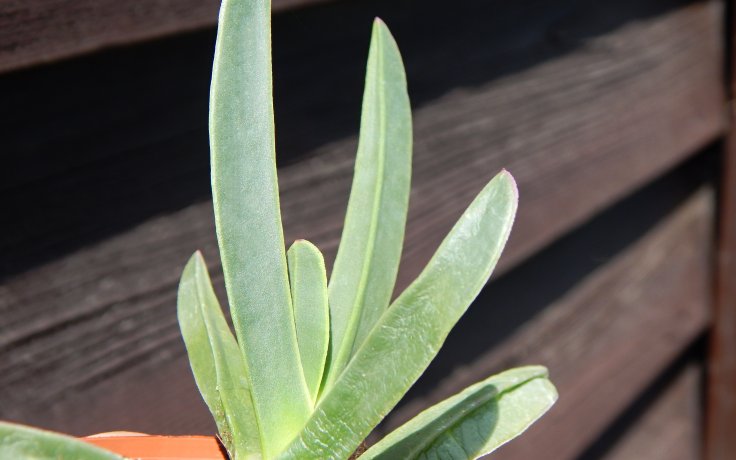
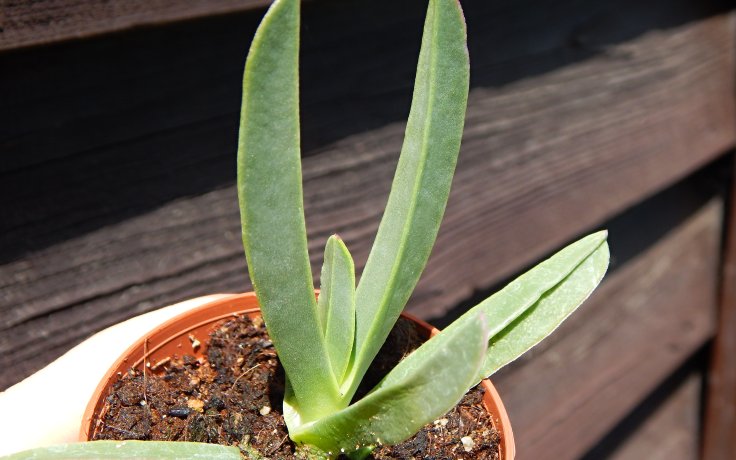
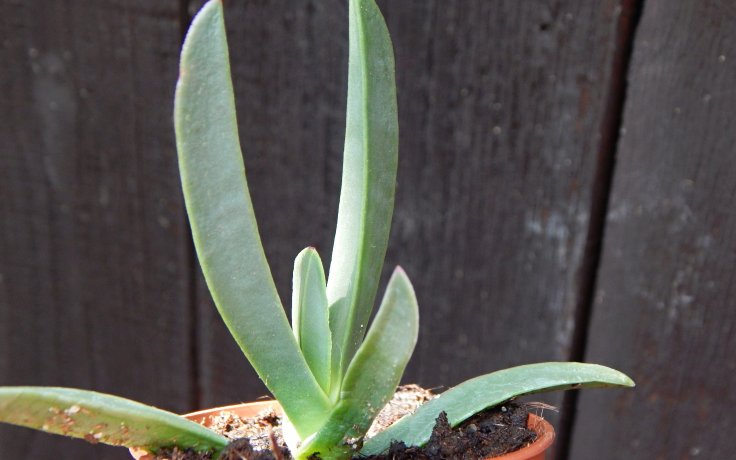
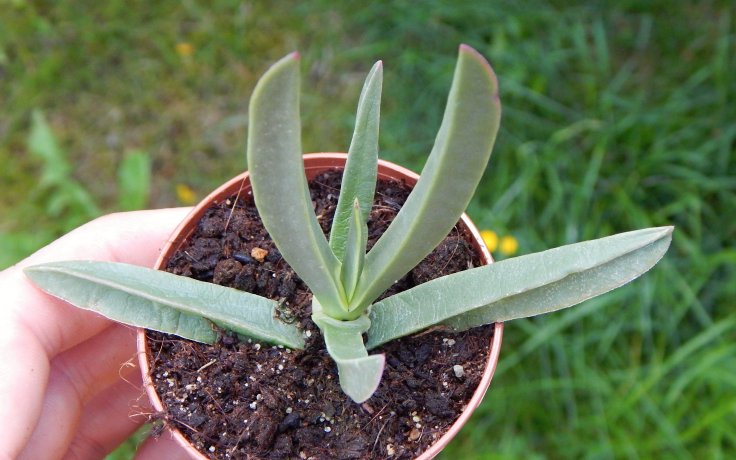
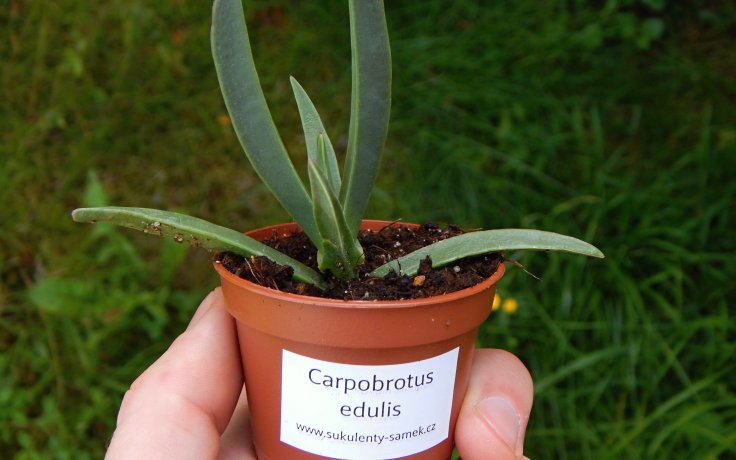
Carpobrotus edulis
The plant likes a sunny habitat.
Always water a few days after the substrate has dried out. Reduce watering in winter.
The plant is partially frost-hardy and can withstand short-term temperatures down to -3.9 °C.
The fruits of the plant are edible when ripe. In the wild, they are eaten, for example, by baboons and porcupines. And the leaves themselves are eaten by South African tortoises.
Carpobrotus edulis, also known as Hottentot Fig, is a succulent plant native to South Africa. It has spread to many parts of the world, including Australia, New Zealand, South America, the USA, the Middle East, Europe and Mexico. It was nicknamed the Hottentot fig after the word "hotentot" which originally referred to peoples in southern Africa. Today, however, the word has acquired a pejorative connotation and is therefore no longer used to refer to ethnic groups, but only to name species of animals and plants. The form of the succulent is strikingly reminiscent of the genus Delosperma.
The fleshy, triangular leaves are grey-green to reddish in colour. The leaves grow arching at the stem and reach 13 cm in length and up to 1.3 cm in diameter. The creeping stems extend up to several metres in length. They root at the nodes and the plant forms a trailing shrub about 20 cm tall.
Flowers open during the day at the end of the shoots. The plant produces yellow fruits. These reach about 3,5 cm in diameter and are edible. Their shape is reminiscent of figs, which gave the plant its nickname.
In its natural habitat, it provides food for many species of local animals. Turtles nibble on its leaves. Porcupines, baboons and antelopes eat the fruits and flowers. The plant can be grown on a rock garden (in a protected place) or in portable containers. It will delight us with its flowers, fruits and hardy growth. Moreover, there is a lot to tell about this plant, so it will enrich your collection with interesting stories.